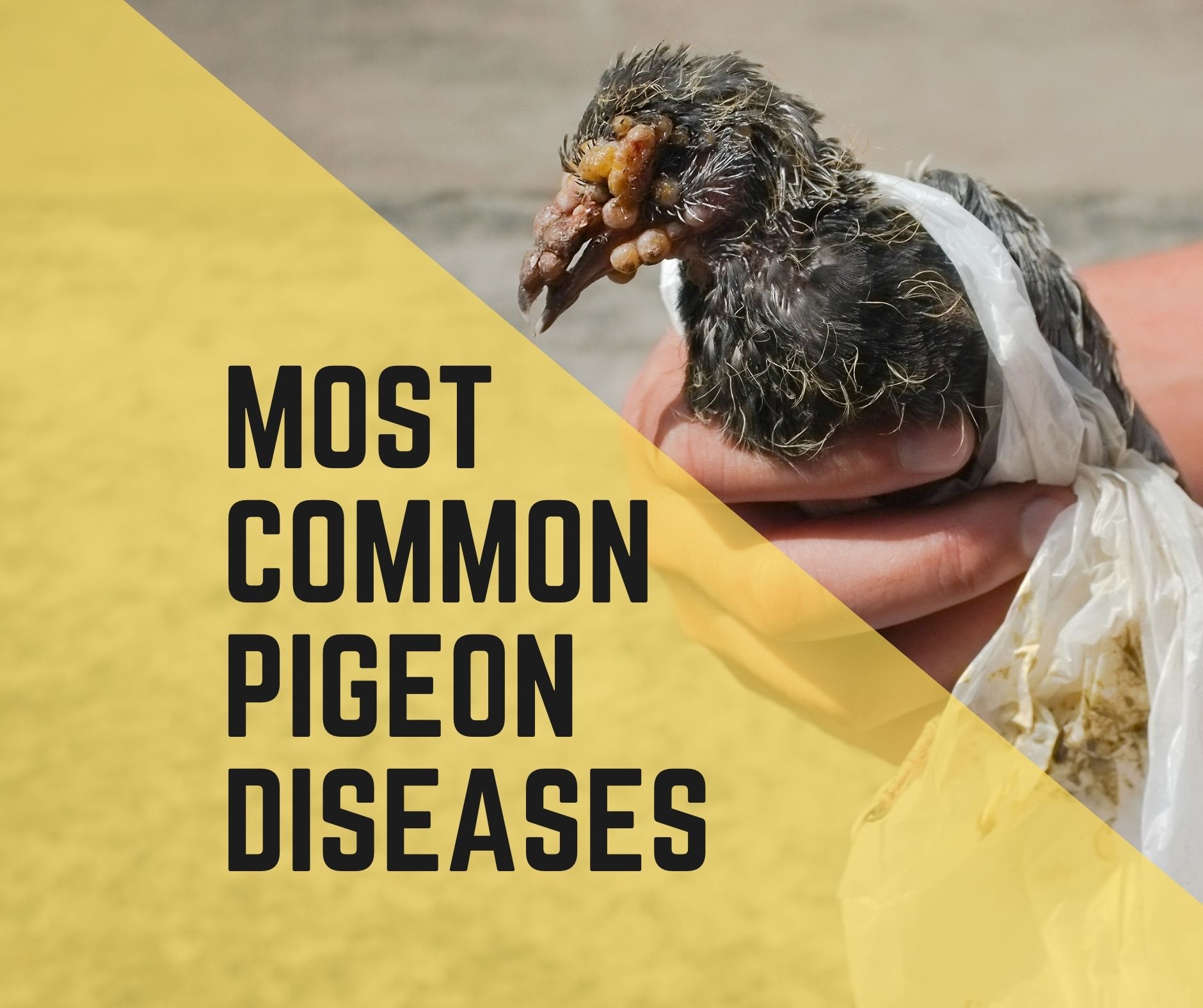
Consider that you are a racing pigeon breeder. One of your pigeons has just won the national title. One day, your flock develops a mysterious disease. Your prized birds start falling sick one after the other.
Before you can stop the disease, you must know what it is. Of course, you can take the birds to a veterinarian, but wouldn’t it be nice if you know for yourself what it is, before you called the doctor? Here are some common pigeon diseases.
Paratyphoid
Paratyphoid is caused by Salmonella bacteria. Unsanitary conditions in the loft and contamination of feed by rodents can cause pigeons to develop this disease. It can also be transmitted when new pigeons are introduced into the loft (without checking for disease).
The affected birds lose weight, release green slimy droppings, show swelling in the wing joints and legs, limp and release infertile eggs.
If you suspect that your pigeons have this disease, collect their droppings from the last five days and get it tested.
The disease can either be chronic or acute. In the acute form, the birds may show diarrhea with blood.
The acute form affects only those pigeons that have not been immunized or have not experienced the disease earlier.
The pigeons may also start drinking more water. In chronic paratyphoid, the disease spreads into the birds’ internal organs like reproductive organs, liver, lungs, and spleen.
Canker
Canker is caused by the protozoan, Trichomonas gallinae.
The protozoan proliferates in the affected pigeons’ oral-nasal cavity and anterior end of respiratory and digestive tracts.
The disease is transmitted in three ways
- infected parents feeding their young,
- drinking contaminated water,
- and ingesting affected birds by birds of prey. The last one is not applicable to pigeons.
In the first instance, the infected parent passes on the disease to its young by feeding it ‘pigeon milk’.
Adult birds are often resistant to the disease though they are still carriers. The disease mostly affects young birds (squabs).
Pigeons can also catch the disease when they drink or eat food contaminated by saliva, crop secretions, or feces of infected birds.
Young birds can die of the disease within 4 to 18 days if not treated quickly.
The infected birds will stop feeding, look ruffled, lose weight, become dull and lose the capacity to stand or maintain balance.
The most obvious sign of the disease is a lesion in the mouth or oropharyngeal tract.
The affected birds may not be able to swallow food and have difficulty in breathing.
Sometimes, the disease can spread into the underlying tissues, including internal organs.
Luckily, the disease can be easily treated. The protozoan cannot survive in the open so cleaning the loft and replacing the water regularly can reduce the transmission of the disease.
Worm infections
Pigeons can be infected by three kinds of worms-
- roundworms,
- capillary worms,
- and tapeworms.
Worm infections are caused by unsanitary conditions in the loft and letting the birds pick on the ground.
The symptoms of a worm infection are bad molt, fatigue, weight loss, and diarrhea.
The birds will lose weight because the worms will feed on the food and deny nutrients to the bird.
You may be able to see the worms in the droppings or even in the bird vomit.
If you don’t treat the worm infection, the worms may cross the intestinal wall and affect vital organs like the liver and lungs.
If you suspect that your bird is infected by worms, give it a worm capsule.
You must also burn the loft because that is the most effective way to destroy the eggs and prevent reinfection in the birds.
After the birds are healed, give them a vitamin preparation.
Paramyxovirus
Sometimes, you may see a pigeon pecking at seeds but missing, dropping head at an unnatural angle, looking drunk, swaying, and generally looking dizzy. If you see these symptoms, it means the bird is affected by a paramyxovirus.
Paramyxovirus is a viral disease. The symptoms of paramyxovirus include:
- nervous damage (staggering, fine tremor of head or eyes, twisted neck, upside-down head, fits, paralysis of wings of legs, turning in circles),
- thin broken droppings in liquid,
- and weight loss.
If your pigeon shows these symptoms, catch it and isolate it from the rest of the flock for at least six weeks, lest the other pigeons also get infected.
Vaccinate all your pigeons at least once a year. If you are going to use them for breeding, vaccinate them again once four weeks before the breeding season.
Vaccinating the pigeon after they have the disease won’t do it any good.
Be careful when you are treating the bird because you can also catch conjunctivitis if you touch your eyes after handling the infected bird.
The disease will get cured by itself in some weeks but you can speed up the process by treating the pigeon with Newcastle Disease Vaccine or La-Sota.
Pigeon Pox
Pigeon pox is a viral disease and its attacks the skin and mucous membrane.
The virus is spread by saliva (an infected parent feeding a squab) or through minute wounds in the skin (caused by pecking or through sharing infected water or feed).
It can also be transmitted through bites. Pigeon pox does not infect humans. The worst affected are wood pigeons.
The affected bird will show crusty or scabby lesions on the beaks, feet, and around the eyes.
The beak and throat may develop cheesy-looking growths. It is easy to confuse these with cancer.
If your pigeon is showing these symptoms, show it to a vet.
The birds appear well otherwise unless the lesions interfere with feeding.
There is no treatment for this disease because it is a viral infection.
The doctor may prescribe an antibiotic to prevent a secondary infection though.
You can give the pigeon some Vitamin A supplements to promote healing.
Do not try to remove the scabs because it may cause heavy bleeding.
Vaccinations are available against pigeon pox. It can be given to pigeons starting at six weeks of age.
Like humans or any other animal, pigeons can also suffer from infections and diseases.
In most cases, they must be treated symptomatically. Vaccines can prevent the occurrence of some of these diseases.
For Further Reading
- History of Domestic Pigeons
- Types Of Pigeon Breeds
- A Guide to Basic Pigeon Care Tips
- Hоw tо Rаiѕе and Fееd a pigeon chick

Hi, There and Welcome to BirdsNews.com, is here to help you learn and care about pet birds. and this blog is a journal of everything I’ve learned.
